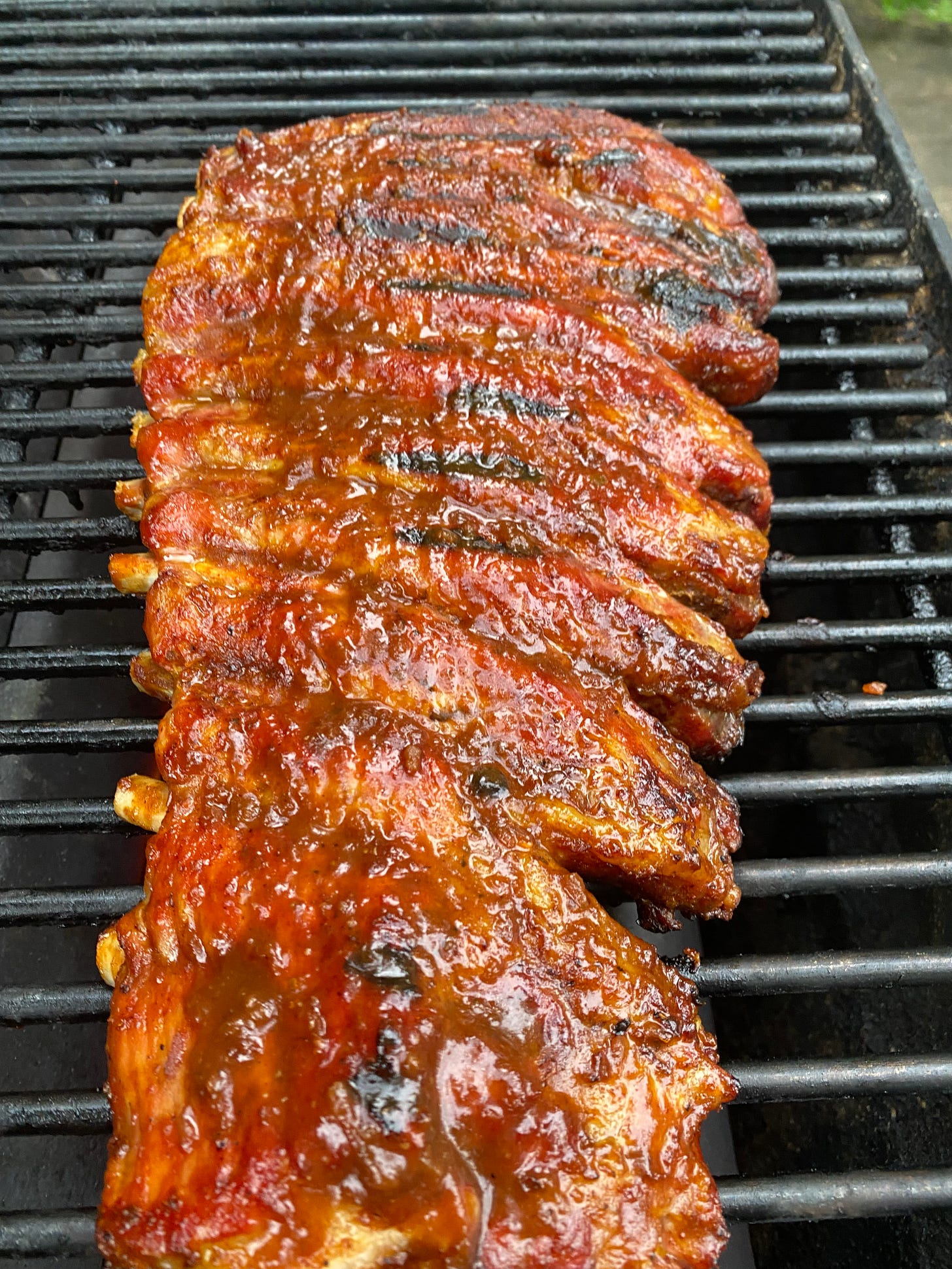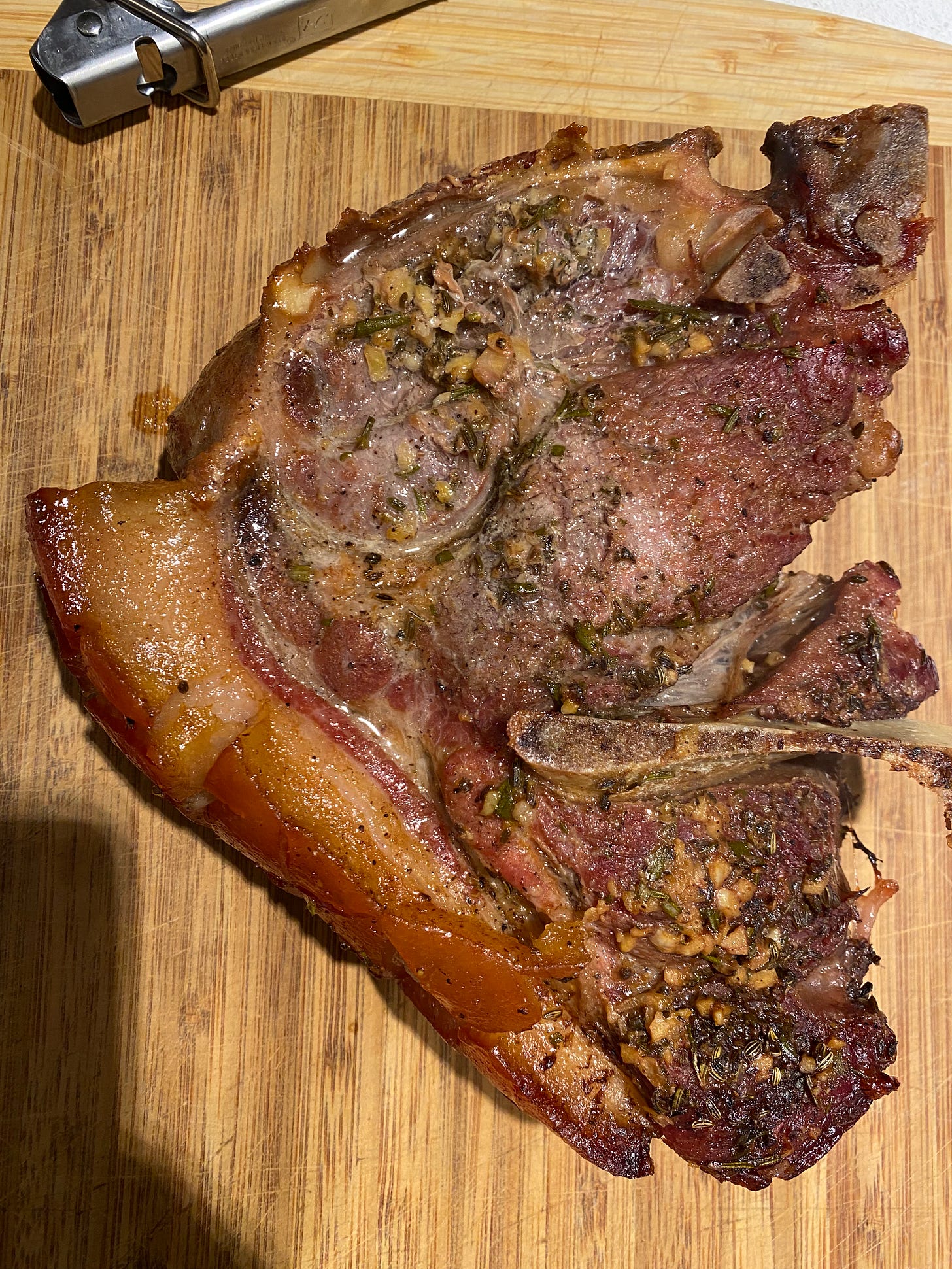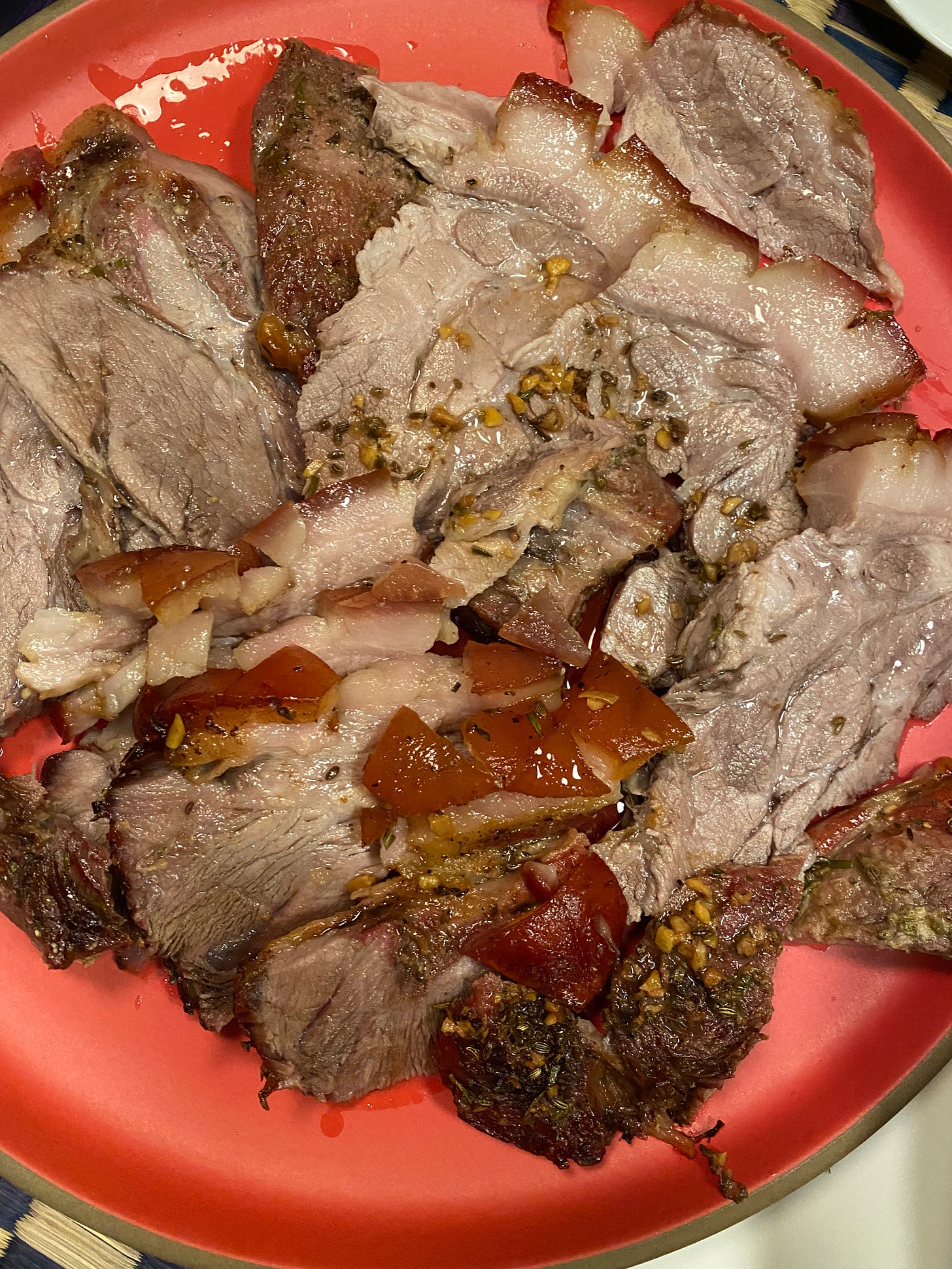Pork in the Style of Porchetta, and Other Pig Tales
Fresh herbs, fennel, and garlic form such a pleasing taste triumvirate for "the other white meat."
It’s our Silver Jubilee edition…well #25, anyway. Thanks for continuing to read and support this Kitchen Sense cooking and writing endeavor. Despite the great reopening, a return to what seems like “normal” even if it doesn’t quite feel it, and jam-packed restaurants, we are continuing to cook and eat at home as much we can. There is just something more satisfying, more delicious, and maybe even more healthful about preparing your own food #imho. Thanks for joining me on this culinary journey.
—Mitchell
I confess, we’ve been eating a lot of pork lately. Not sure why that’s a confession. Perhaps because I’m Jewish and even though I am not observant and have never adhered to the laws of kashrut, as a Jew there’s a sense you shouldn’t be eating too much pork, and even then, only in certain forms—ham, bacon, ribs. If you do, you certainly should not tell anyone. And then there’s my cardiologist, who might be reading this, and to whom I promised I would watch my diet. #occupationalhazard Forgive me.

There are a few reasons pork has been on our table frequently lately. We’ve got several excellent sources of local pork up in the Finger Lakes, where we’ve rented a house for the last few months. I cannot tell you how much better good pork tastes than the mass-produced, factory-farmed stuff you get in most supermarket meat counters. In fact, good pork has a taste, which for some is a surprise. It also has a wonderful richness and texture that doesn’t come off as heavy or tough. You really should seek out the best pork (and all meat) you can find, pasture-raised, whether heirloom or not. It’s more expensive, for sure. But it’s worth it. Eat less. (Easier said than done.)
Also, the lakehouse has a gas barbecue, which is something that I haven’t had regular access to for more than 30 years. Pork is so well suited to grilling and smoking. My first job in a real restaurant was grillardin, or grill cook. I’ve been having fun getting back to my culinary roots.
During this time I’ve been cooking a lot of pork I’ve been playing with all sorts of preparations and flavor profiles, most of them very satisfying, because, as I said, the quality of the meat we are buying is very good. As you know, I make a lot of Chinese food, and Chinese roast pork, or char shiu, is one of the greatest meat preparations of all. But just a few nights ago I fell back on another old favorite, porchetta, or I should say, prochetta-style pork, and it was so delicious I wanted to share it with you.
The first time I stumbled on a porchetta truck at a street market in Italy, it was a revelation. The fact that there was such a truck, or many of them, dedicated to this specialty is where my excitement began. Then there was the sheer size of the whole, boned, stuffed and rolled pig on the spit, its glistening, crispy skin an invitation to indulge. The fragrance of the herbs made me salivate as the butcher sliced through the mosaic of different muscles and the juicy pieces of meat fell to the cutting board. By the time those morsels were piled onto a sandwich roll and doused with some of the cooking juices, it was almost too much to bear. I’ve never carried porchetta away from a truck without putting a piece or three in my mouth.
For several years I could satisfy my craving for porchetta back in New York City at Sara Jenkin’s tiny Porchetta shop on East 7th Street. But the shop closed in 2016. Eataly makes a decent version of porchetta that’s available sometimes in their rosticceria, but I just as soon make it at home.
I simulate porchetta at home by applying similar seasoning on different cuts of pork. the combination of garlic, herbs (rosemary, thyme, and sage, if I have it), and fennel seed or pollen is a mighty triumvirate. The other day I used the Mercato shopping app for the first time and what I got from one of my favorite butchers (Ends Meat at Essex Market) was a beautiful, bone-in, cross-section of a shoulder roast that came with a nice outer layer of fat and the skin still intact. It begged to be treated like porchetta. So I mixed up the seasonings, rubbed them into the muscle, let it marinate a few hours, and roasted it until the skin was crisp and the meat was tender.

RECIPE: Pork Roast in the Style of Porchetta
4 to 5 pound pork roast, either shoulder, butt, loin, or belly (rolled and tied), preferably bone in and with skin still attached
3 or 4 large cloves garlic, minced
1 or 2 large branches fresh rosemary, leaves only, minced (about 2 or 3 tablespoons)
Handful of fresh thyme sprigs, leaves only
5 sage leaves, minced
2 tablespoons fennel seeds or pollen, or a combination
1 1/2 tablespoons kosher salt
2 tablespoons olive oil
Freshly ground black pepper
If the pork has the skin still attached, use a sharp, thin kinfe, to score the skin in a ¾-inch cross-hatch pattern, cutting just through the skin and not too deep into the fat. This will help the fat render and the skin crisp.
In a small bowl, combined the garlic, rosemary, thyme, sage, fennel seeds and pollen, if using, salt, olive oil, and a generous amount of freshly ground black pepper. Mix well.
If the pork comes wrapped in butcher paper, lay it out on the paper. Otherwise you can overlap a couple of sheets of plastic wrap and place the pork on top. Using the back of a spoon and/or your fingertips, cover all the exposed meat surfaces with this herb and garlic mixture and rub it in a little. Wrap up the pork, put it in a plastic bag and refrigerate at least an hour and up to four days. It’s best after at least a day or two of marinating. And I’ve pushed it even longer with good results.
Preheat the oven to 375°F. Unwrap the pork and place it in an enameled cast-iron pot with a heavy lid (e.g., by Le Creuset, Staub, or similar). If your pot has enough depth to stand the pork with the skin up on its bone—that is, if there is one—do so. But don’t worry if you have to lay it down. Cover and set in the oven for about 1 hour to steam/roast. Turn the roast over onto its other side, cover, and return to the oven for about 45 minutes.
Now, remove the roast from the oven. Turn up the heat to 425°F. Remove the cover and stand the roast up as sturdily as you can. Lean it on the side of the pot, if necessary. Baste with some of the fat and juices. Return to the oven and roast until the skin has browned on the edges, another 30 to 45 minutes. Use an instant-read thermometer to check that the internal temperature has hit 190°F. Remove from the oven and let rest for 20 minutes. Slice the roast as thickly or thinly as you like, across the grain. Arrange the slices on a platter and spoon some of the rendered fat and cooking juices over top before serving.



